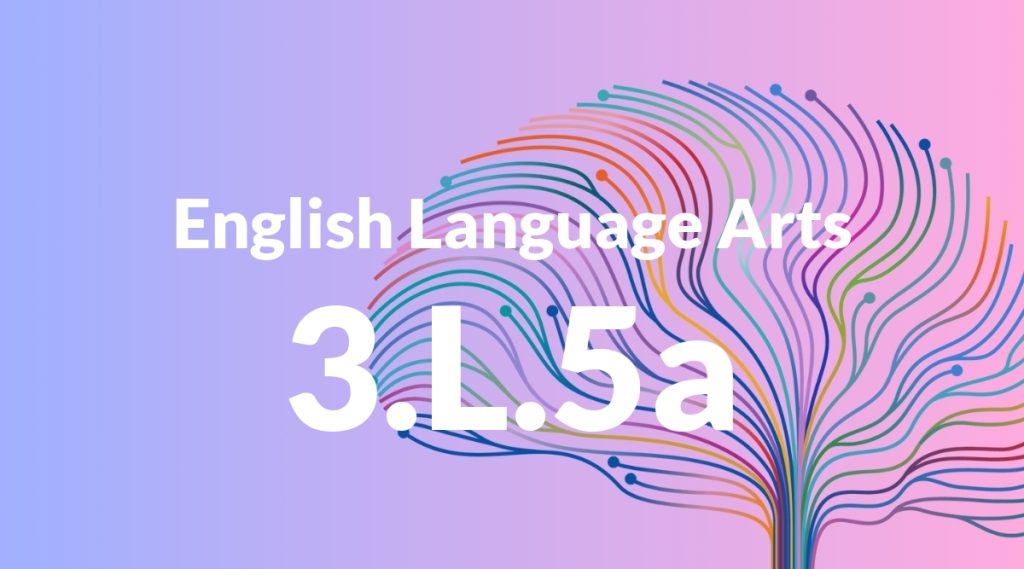Standard: 3.L.5a – Distinguish the literal and nonliteral meanings of words and phrases in context (e.g., take steps).
Grade level: Grade 3
Subject: English Language Arts
Domain: Language
Teacher Overview
This standard focuses on helping students distinguish between literal and nonliteral meanings of words and phrases. This skill is crucial as it enhances reading comprehension and the ability to interpret figurative language, which is frequently used in literature and everyday language. Students should have a basic grasp of word meanings and context clues. Familiarity with simple figurative language like similes and metaphors is also beneficial.
Mastering this standard will prepare students to interpret more complex figurative language, enhancing their overall reading comprehension and appreciation for literature.
Common Misconception 1
A common misconception is that all phrases should be taken literally. This misunderstanding can hinder students’ ability to grasp the intended meaning of texts that use figurative language.
Intervention 1
To address this misconception, use visual aids and real-life examples to illustrate the difference between literal and nonliteral meanings. Engage students in activities where they identify and explain both types of meanings.
Common Misconception 2
Another misconception is that nonliteral meanings are incorrect or less valid than literal meanings. This can cause confusion and frustration when students encounter figurative language.
Intervention 2
Provide a variety of examples and ample practice opportunities to help students understand and appreciate nonliteral meanings. Use engaging texts that incorporate idioms, metaphors, and similes.
Prerequisite Knowledge
Students should have a basic understanding of word meanings and be able to identify context clues in sentences. They should also be familiar with simple figurative language like similes and metaphors.
Subsequent Knowledge
After mastering this standard, students will be able to interpret more complex figurative language and idiomatic expressions. They will also enhance their reading comprehension skills by understanding nuanced meanings in texts.
Instructional Activities
- Create a chart with literal and nonliteral meanings of common phrases.
- Read a story and highlight phrases with nonliteral meanings, then discuss their interpretations.
- Play a matching game where students pair literal phrases with their nonliteral counterparts.
- Write short paragraphs using idioms and have students explain their meanings.
- Use role-playing to act out and understand idiomatic expressions.




